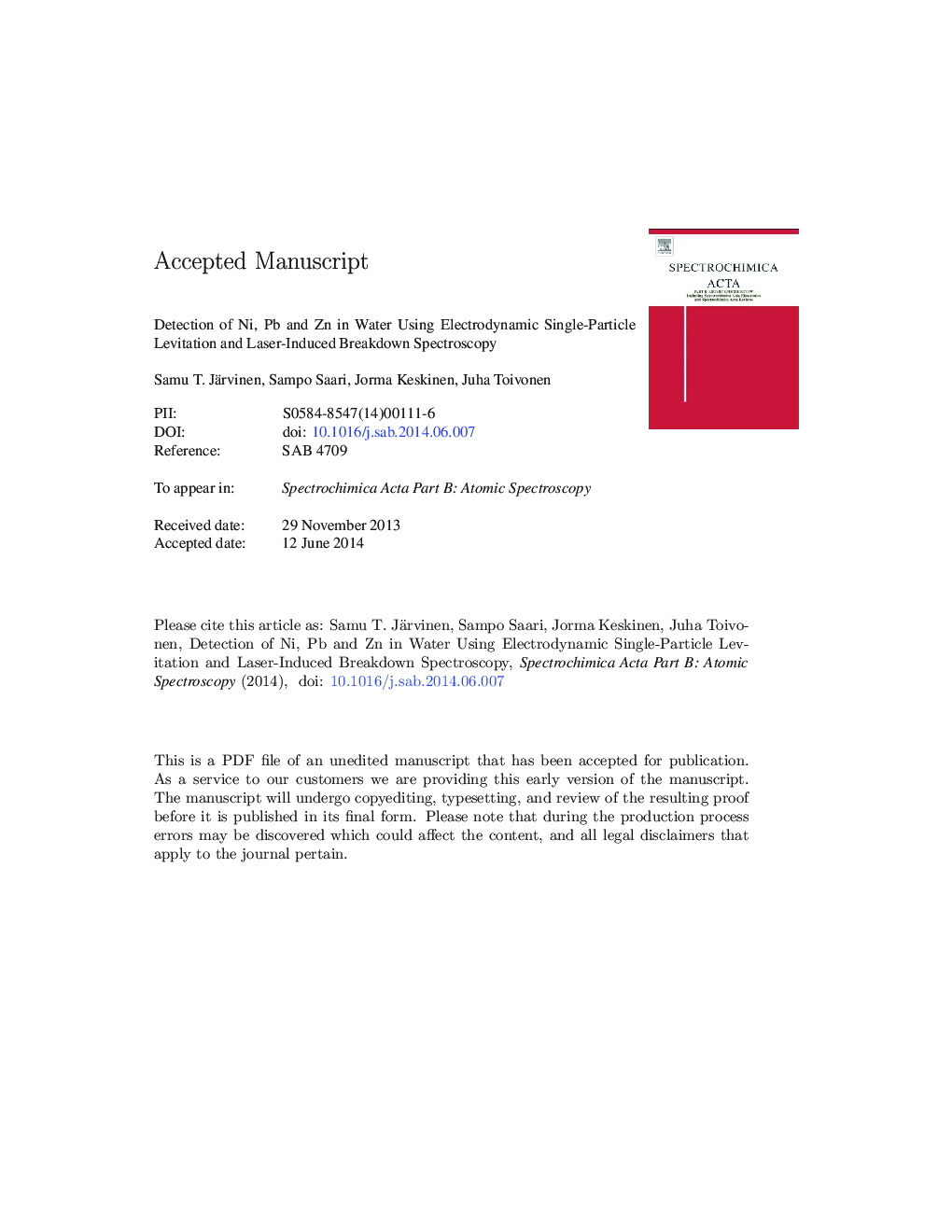| Article ID | Journal | Published Year | Pages | File Type |
|---|---|---|---|---|
| 7674675 | Spectrochimica Acta Part B: Atomic Spectroscopy | 2014 | 18 Pages |
Abstract
We report the development of a unique laser-induced breakdown spectroscopy (LIBS) based method for the trace metal analysis of water. The method is further applied to the analysis of aqueous samples containing known concentrations of nickel, lead and zinc. Effects that reduce the sensitivity of the LIBS analysis of aqueous samples were avoided in the presented technology by performing the LIBS analysis from a single dried salt particle which was levitated in an electric field. The salt is added to the water sample prior to analysis. A single-droplet generator injects a droplet of the solution to the measurement chamber. The droplet is trapped using electrodynamic balance technology and metals are highly concentrated as the water from the droplet rapidly evaporates without a need for additional heating. The resultant solid 7 μm particle is levitated with a high spatial stability in the LIBS focal volume. The constant mass and position of the particle enable the high reproducibility of the LIBS signal. The limits of detection in the original solution were recorded low 60 ppb, 60 ppb, and 50 ppb for nickel, lead, and zinc, respectively using low, 14 mJ excitation pulse energy. The methodology is applicable to the online monitoring of industrial waters due to the achieved sensitivity and robust instrumentation.
Related Topics
Physical Sciences and Engineering
Chemistry
Analytical Chemistry
Authors
Samu T. Järvinen, Sampo Saari, Jorma Keskinen, Juha Toivonen,
